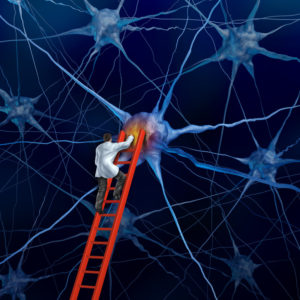Learn to up level your performance with an NLP strategy using sub modalities. What are the limiting thoughts in your mind costing you? How valuable is your freedom when you overcome them, and they no longer affect you? For those of you who have worked with us, you will know how quickly we can remove limitations created in your mind. We spent years learning and mastering new code NLP, so our clients can get fast results to significant change.

New code NLP is content free. This means we only need an overview to understand how the programme has been coded in your mind. For traumatic or catalyst events, this is incredibly useful. Revisiting the story or memory only imbeds it deeper into your mind. And the memory is your perception of the event that happens – remember your mind likes to create meaning.
John Grinder and Richard Bandler, who founded NLP, gave us the language to describe the construction of our internal processes. It offers us the ability to understand how they are coded, and to change them to create opportunities instead of limitations.
New code is also great for the small stuff. I was visiting with a friend this week, who was slightly lacking confidence in one small area of her ability to perform on stage. Although she knew the thought she was thinking was not logical, and she had no evidence to prove it, she was still battling the idea she wasn’t good enough. There was a wee bug that her unconscious had deployed.
After an ecology check – which every NLP Practitioner should do before any change work – I removed the source of the limiting belief by breaking the code using NLP Representational systems and submodalities.
I’d like to invite you to play along for you to discover how your submodalities code your performance. Bring to mind a situation where you performed poorly and would like to improve. How would you rate your performance on a scale of 1 to 10? As if you were looking at a screen above eye level, see yourself in this situation. Looking at this image notice:
What size is the picture? Where is it?
Is it colour or black and white?
Is it moving like a film or still like a photograph?
Is it focused or blurry?
Is it framed or unframed?
Is it 2D or 3D?
Are you in the picture or looking at from the outside?
Notice if there are any sounds associated with this picture – are they loud or quiet? Is the sound continuous or does it stop and start? Is there a hum or vibration to the sound? Where is the sound coming from? Does it have a tempo – fast or slow. Is there a pitch – high or low? Are the sounds clear or muffled?
Are there any feelings associated with this image? Where do you feel them? Is there a vibration. Are the feelings moving – here its useful to trace any movement with your hands). Is there a weight to these feelings – light or heavy? Are the feelings continuous or do they stop and start? Do they feel warm or cold or comfortable?
Move this image off screen. Stand up, take a breath and now bring to mind an image of a situation where your performance really pleases you. Something you do well and enjoy. Place this image on the screen above eye level. How would you rate your performance in this situation on a scale of 1-10. If its below 8.5 find another one.
What size is the picture? Where is it?
Is it colour or black and white?
Is it moving like a film or still like a photograph?
Is it focused or blurry?
Is it framed or unframed?
Is it 2D or 3D?
Are you in the picture or looking at from the outside?
Notice if there are any sounds associated with this picture – are they loud or quiet? Is the sound continuous or does it stop and start? Is there a hum or vibration to the sound? Where is the sound coming from? Does it have a tempo – fast or slow. Is there a pitch – high or low? Are the sounds clear or muffled?
Are there any feelings associated with this image? Where do you feel them? Is there a vibration. Are the feelings moving – here its useful to trace any movement with your hands). Is there a weight to these feelings – light or heavy? Are the feelings continuous or do they stop and start? Do they feel warm or cold or comfortable?
How does this image differ from the first one?
Move this image off screen, and bring back the first one.
Reconstruct this image so it looks like the second one. Reconstruct the sound track (if there was one) to match the first and adjust the feelings to match the second one. Once you’ve changed this image to your liking, step into the picture and experience the situation with these changes through your own eyes and ears.
Notice the differences. How would you rate your performance on a scale of 1-10 now? Notice that sometime in the future you will be in this situation, performing in a way that pleases you.
This is an NLP submodality change pattern. It can also be used for changing beliefs, mastering your skills and improving your relationships. Tony Robbins uses submodilities in many of his patterns for change, such as self edits. I use them in the create my day process.
We would love to know of any changes you experience, or if you have any questions about this – drop a line in the comments.
